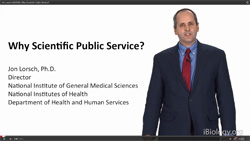When I joined NIGMS about four years ago, I was struck by the number of press releases from journals and grantee institutions that came across my desk each day. Many of them focused on a recently published paper and failed to explain how the work fit into the broader field. Others overstated the research results to make them sound more exciting and closer to clinical application.
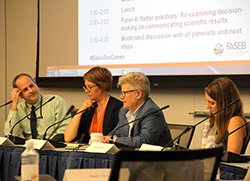
Around the same time, science communicators started writing articles and conducting studies about the effects of hyped research findings (e.g., Schwartz et al., 2012; Yavchitz et al., 2012, Sumner et al., 2014; Vox, 2017). While these discussions focused on clinically oriented research, we at NIGMS began thinking deeply about how the issue relates to basic biomedical science. On the heels of our work with the Federation of American Societies for Experimental Biology (FASEB) on enhancing rigor and reproducibility in biomedical research, we started talking to them about this topic as well. Two years later, we were pleased to host their Workshop on Responsible Communication of Basic Biomedical Research: Enhancing Awareness and Avoiding Hype.
The June 22 meeting brought together a diverse group of science communicators who included early and established investigators, researchers who study science communication, academic and corporate communication officers, policy advisors and journalists. Each panelist represented a stakeholder group with a role in what panelists later called the “hype cycle” and shared his or her perspectives on the problems of hype, the incentives that cause it and recommendations for avoiding it. The meeting focused on basic biomedical research, but the discussions were also relevant to other areas of science.
In her keynote address, veteran science journalist Erika Check Hayden defined hype as “exaggerating the outcomes of research, for whatever motives people have, leading to potential negative effects due to inaccurate portrayal of research.” She credited this definition to Judith Greenberg, our deputy director.
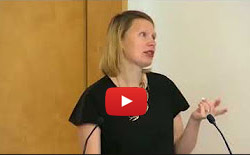
The subsequent discussions highlighted the shared responsibility among all the stakeholder groups for improving science communication and changing the incentives for it. Panelists acknowledged that scientists sometimes oversell the conclusions of studies hoping to get their work published in “better” journals or to improve their chances for obtaining funding; journals may decide on manuscripts to publish based on which ones they think will be cited the most or get press attention; communication officers and journalists are often judged by how many hits their stories get; and universities and research institutes may consider the fundraising potential of scientific news stories.
Here are some of the topics discussed during the workshop that really resonated with me.
Continue reading “Avoiding Hype and Enhancing Awareness in Science Communication”

 Among this year’s PECASE recipients (nominated in 2014) are two NIGMS grantees, Tufts University’s Aimee Shen (who started her career at the University of Vermont) and Montana State University’s Blake Wiedenheft (who was the inaugural NIGMS Director’s Early Career Investigator Lecturer). Both scientists launched their labs with support from our Institutional Development Award (IDeA) program, which fosters health-related research and enhances the competitiveness of investigators at institutions in states with historically low levels of NIH funding.
Among this year’s PECASE recipients (nominated in 2014) are two NIGMS grantees, Tufts University’s Aimee Shen (who started her career at the University of Vermont) and Montana State University’s Blake Wiedenheft (who was the inaugural NIGMS Director’s Early Career Investigator Lecturer). Both scientists launched their labs with support from our Institutional Development Award (IDeA) program, which fosters health-related research and enhances the competitiveness of investigators at institutions in states with historically low levels of NIH funding.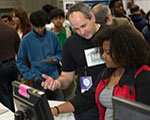 A few weeks ago, 23 NIGMS volunteers and I spent an amazing day with thousands of highly engaged kids, their parents and other science enthusiasts of all ages at the Washington, DC, Convention Center. We were participating in the USA Science & Engineering Festival, the largest STEM event in the nation.
A few weeks ago, 23 NIGMS volunteers and I spent an amazing day with thousands of highly engaged kids, their parents and other science enthusiasts of all ages at the Washington, DC, Convention Center. We were participating in the USA Science & Engineering Festival, the largest STEM event in the nation.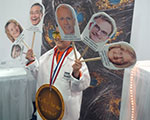
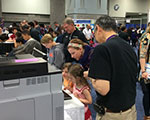 I encourage you to share your own enthusiasm for science with young people whenever you have the opportunity. Whether you judge a science fair, speak at a career day or have students visit your lab, you put a human face on science and help students see it as an exciting, fulfilling and worthy career choice.
I encourage you to share your own enthusiasm for science with young people whenever you have the opportunity. Whether you judge a science fair, speak at a career day or have students visit your lab, you put a human face on science and help students see it as an exciting, fulfilling and worthy career choice. On November 5, we’ll host my favorite NIGMS science education event: Cell Day! As in previous years, we hope this free, interactive Web chat geared for middle and high school students will spark interest in cell biology, biochemistry and research careers. Please help us spread the word by letting people in your local schools and communities know about this special event and encouraging them to register. It runs from 10 a.m. to 3 p.m. EST and is open to all.
On November 5, we’ll host my favorite NIGMS science education event: Cell Day! As in previous years, we hope this free, interactive Web chat geared for middle and high school students will spark interest in cell biology, biochemistry and research careers. Please help us spread the word by letting people in your local schools and communities know about this special event and encouraging them to register. It runs from 10 a.m. to 3 p.m. EST and is open to all.